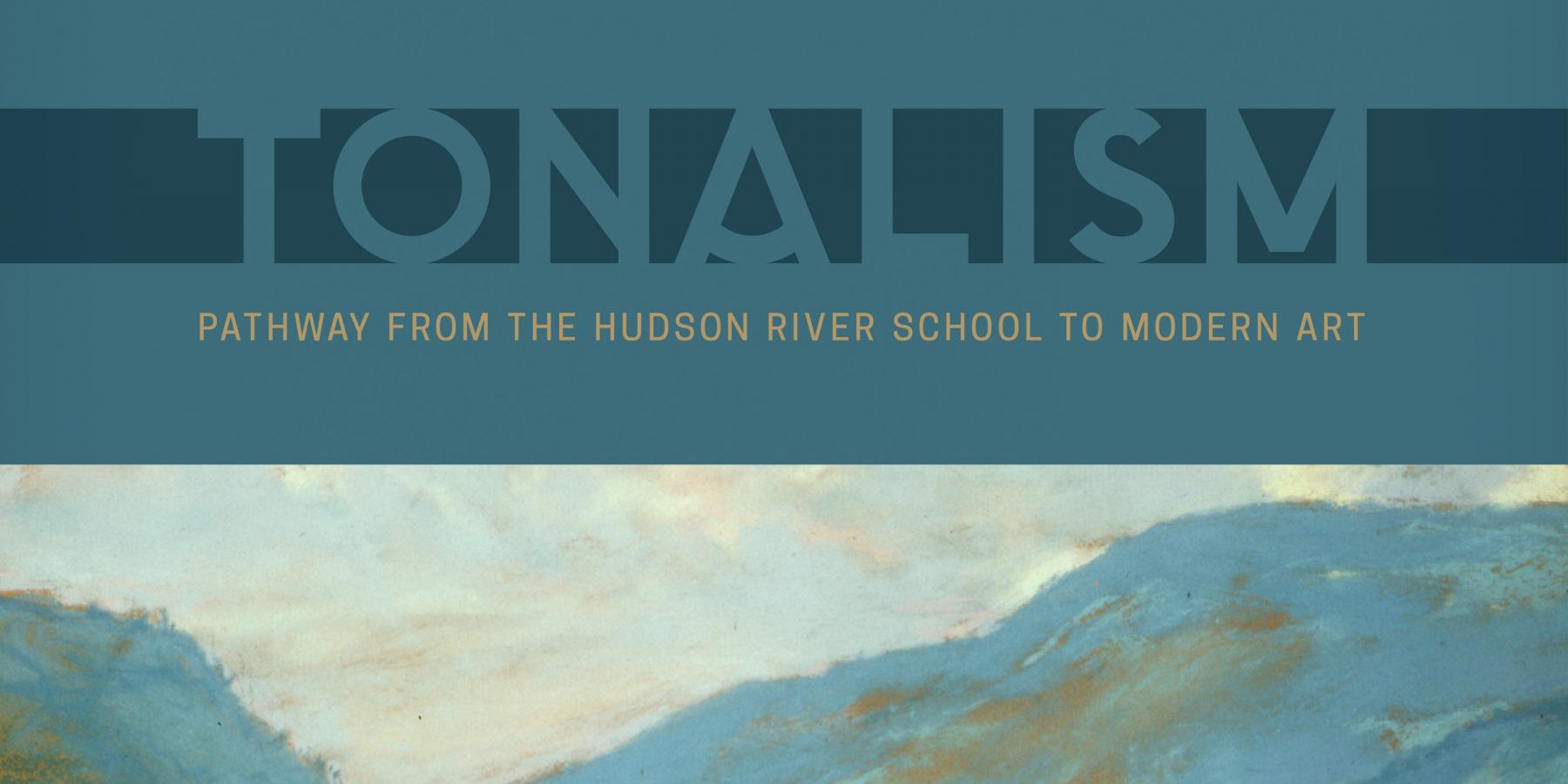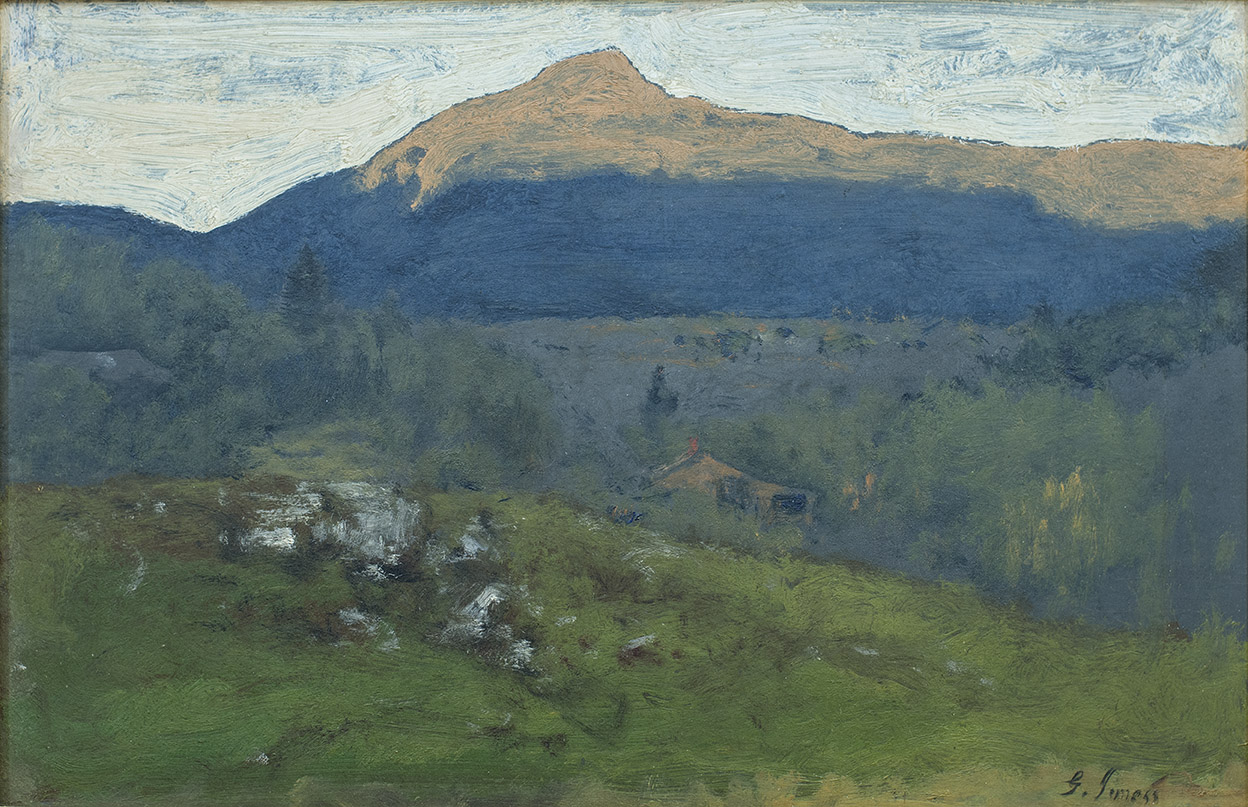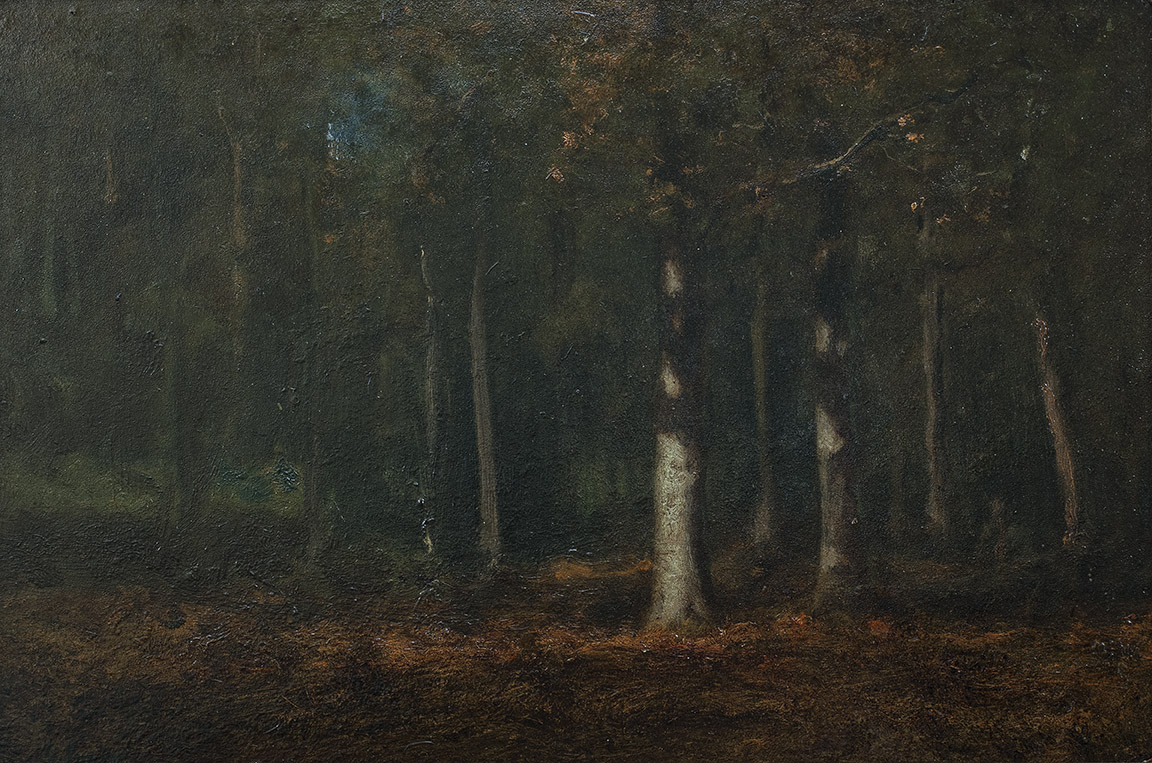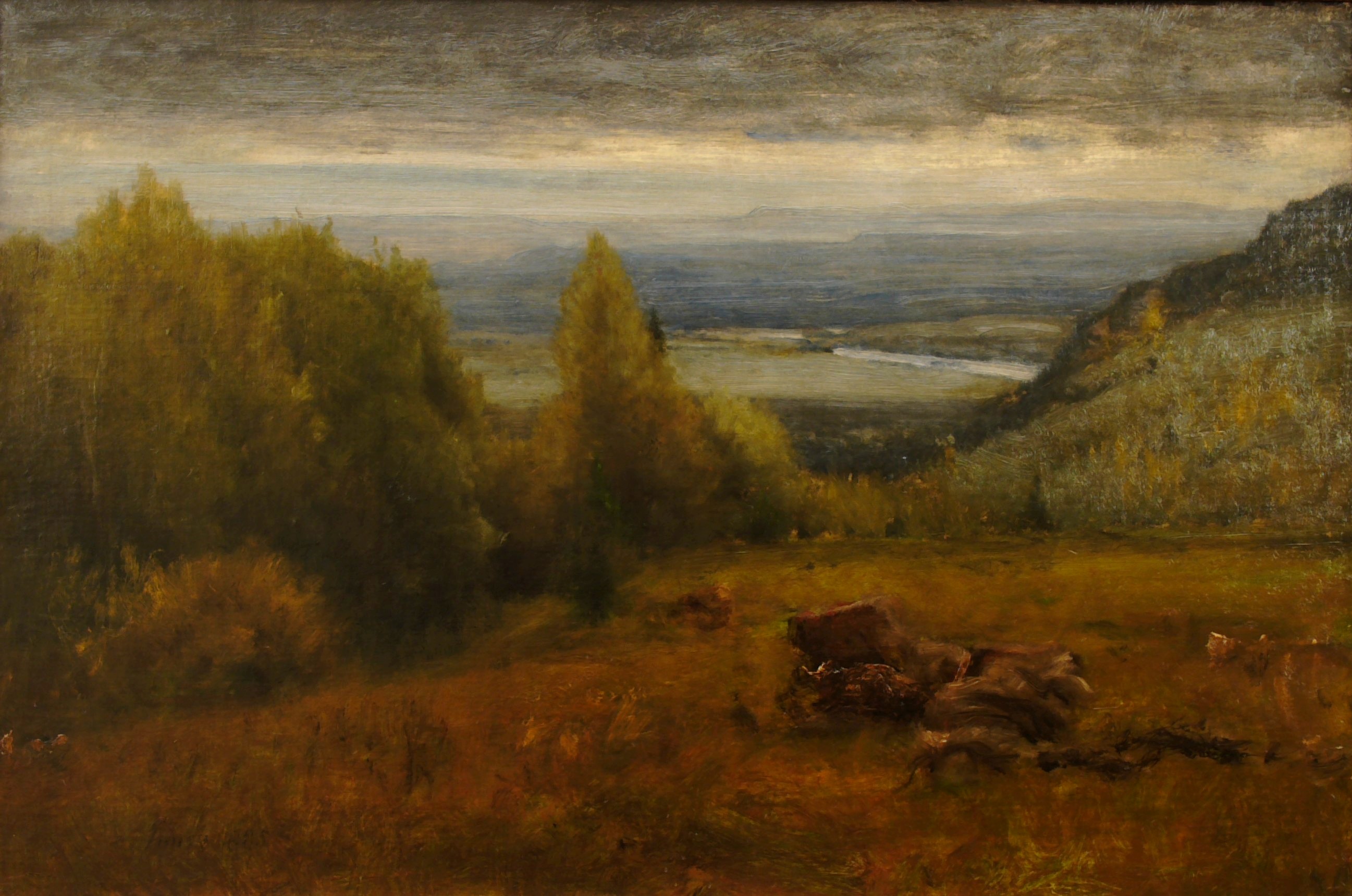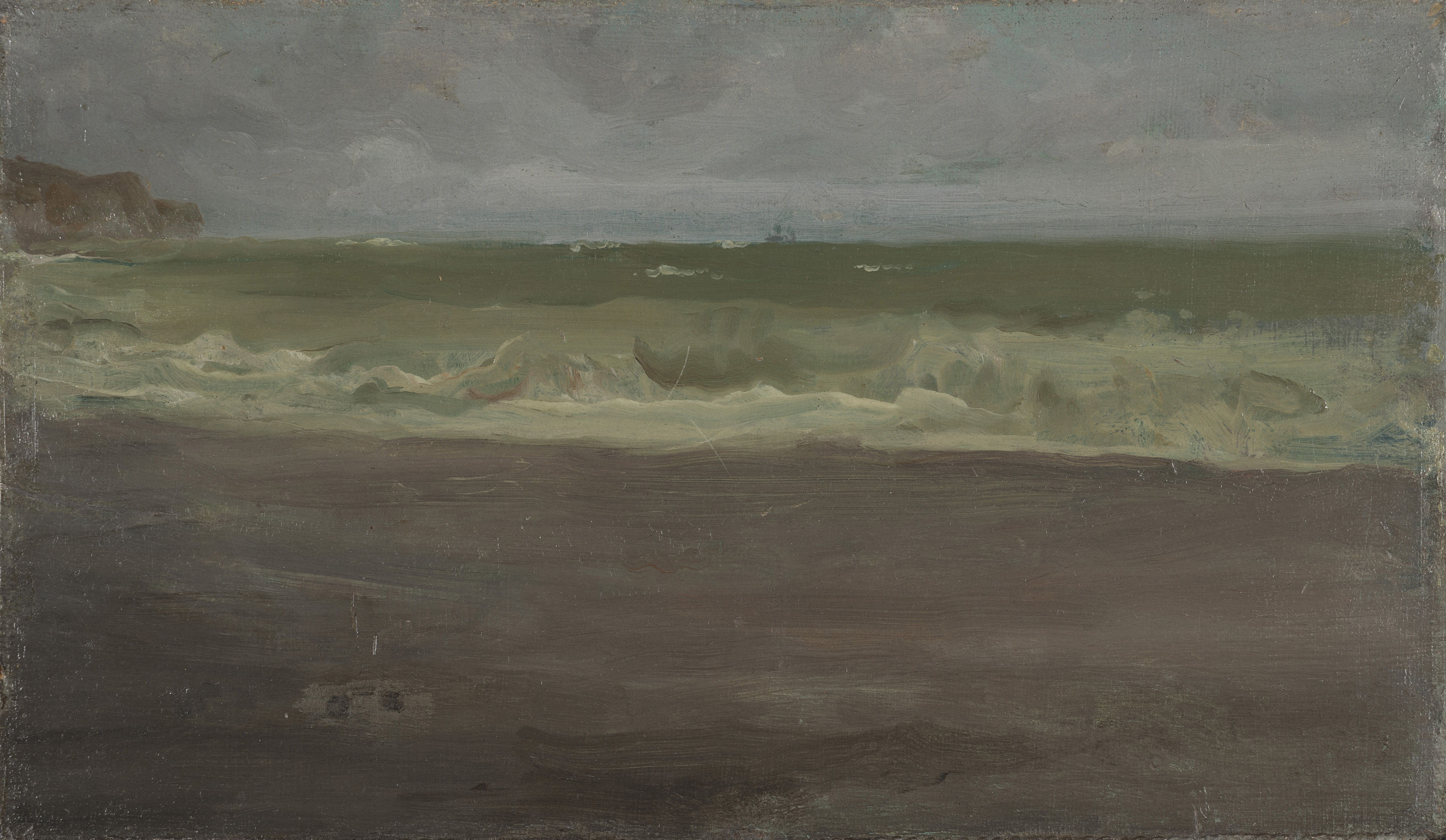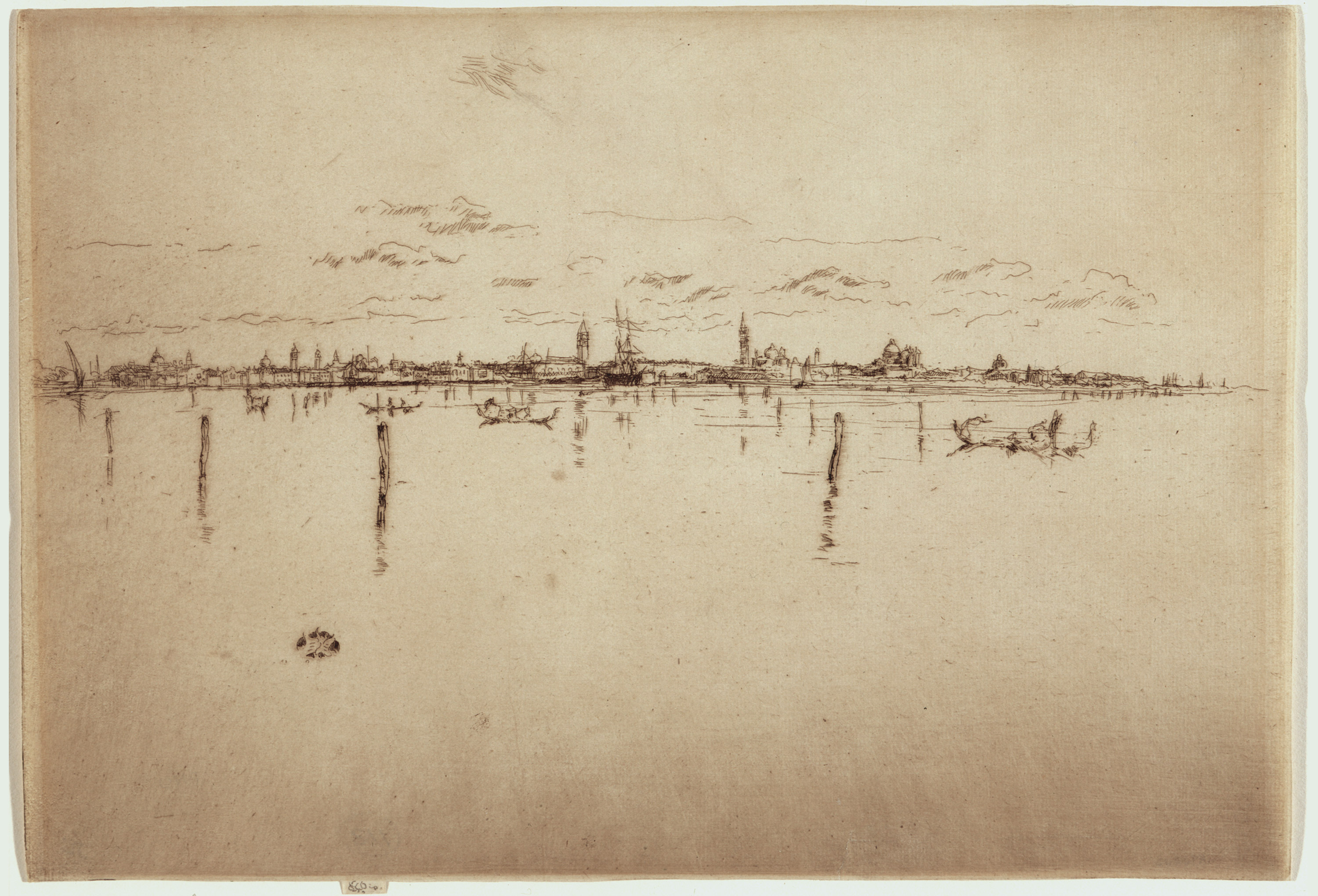The Trailblazers: George Inness and James Abbott McNeill Whistler
Although they had vastly different approaches, George Inness (1825–1894) and James Abbott McNeill Whistler (1834–1903) are seen as the forefathers of Tonalism. Subsequent artists practicing the style found inspiration in one or the other, or both.
George Inness became one of the most important landscape painters in the United States after the Civil War. His early work bore similarities to that of the artists of the Hudson River School in its tight paint handling and detail, but his subject matter differed in that he favored domesticated views rather than the awe-inspiring wilderness depicted by America’s first group of landscape artists. In his travels abroad, Inness was exposed to the work of the French Barbizon painters, realist artists who depicted rural subjects with loose brushstrokes and a deep, rich palette. Drawing on this, Inness developed a personal style that eschewed the narrative elements often found in Barbizon work. He gradually relied more upon memory, woven with his belief in the relationship between natural and spiritual worlds.
If George Inness was the most important late nineteenth-century American landscape painter, James Abbott McNeill Whistler was overall one of the most influential artists of the century. Unlike Inness’s efforts to realize spirituality in his landscapes, Whistler espoused Aestheticism, or “Art for Art’s Sake.” He stated,
Art should be independent of all clap-trap—should stand alone, and appeal to the artistic sense of eye or ear, without confounding this with emotions entirely foreign to it, as devotion, pity, love, patriotism, and the like. All these have no kind of concern with it, and that is why I insist on calling my works “arrangements” and “harmonies” (Endnote 1).
Aestheticism encouraged artists to move away from traditional representation and subject matter. This departure from the depiction of visual reality set the stage for the rise of modernist approaches, including abstraction, in the twentieth century.
Whistler also immersed himself in the avant-garde artistic and literary circles in Paris and London whose members believed that contemporary life should be the source of creative work. In the visual arts, this radical concept rejected the Renaissance tradition of historical painting—subjects taken from ancient Greek and Roman history or the Bible—long held to be the highest form of expression. In all media—painting, pastel, etching, and other works on paper—Whistler also embraced the principles of Japanese composition, then newly discovered by European artists via prints, with flattened forms and space, and often monochromatic colors.
Endnotes:
1. James McNeill Whistler to The World, May 22, 1878, in University of Glasgow, The Correspondence of James McNeill Whistler, https://www.whistler.arts.gla.ac.uk/correspondence/exhibit/display/?rs=…, accessed 7/24/19



